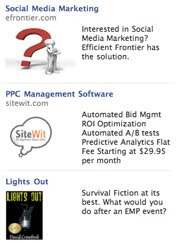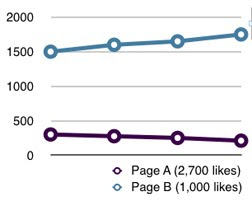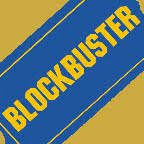 Nobody saw it coming, but the Bronx Zoo's cobra has become an overnight sensation on Twitter. The cobra had quickly slithered up the influencer rankings, beating out best-selling authors, politicians, and social media experts in just a few hours. The cobra has attracted 150,000 followers after 50 tweets.
Nobody saw it coming, but the Bronx Zoo's cobra has become an overnight sensation on Twitter. The cobra had quickly slithered up the influencer rankings, beating out best-selling authors, politicians, and social media experts in just a few hours. The cobra has attracted 150,000 followers after 50 tweets. Currently with a Klout score of 73 and climbing, the snake is credited by the influencer measurement algorithm as "knowing what's trending and earning respect from your network." The cobra has even had conversations with celebrities like Ellen DeGeneres and city officials like Mayor Mike Bloomberg. The Huffington Post reports that the snake is already earning endorsement deals. SKYY Vodka offered the snake a $10,000 appearance fee.
How did the snake do it? Social media experts want to know! So we met with the snake earlier in the week to find the magic.
Ten Questions With A Social Media Snake.
Q: How does it feel to be an overnight sensation and social media influencer?
A: Listen, let me tell you about influence. I've been an influencer much longer than I've been online. Who was Aesop fixated on when he wrote fables? Me. Who did the ancient Aztecs worship as the master of life? Me. Who convinced Adam and Eve to eat the apple? Me again. I've always been an influencer. I didn't need Twitter to make me one. If it wasn't for me, all you humans would still be running around in fig leaves and ignorant bliss.
Q: Are you going to take the SKYY Vodka endorsement deal?
A: I'm holding out for the big money. Maxim writer Justin Halpern held out after launching $#*! My Dad Says on Twitter and look what happened: Someone published his crappy book and CBS bought the television rights. None of it was funny. Call the show $#*! My Snake Says and I'd rule CBS.
Q: If you did get a television deal, who would play you?
A: Wow. That would be a real toss up. Mom always liked William H. Macy but I'm thinking Gary Busey. Busey is off the hook! But hey, I'm not picky. Brian Solis works. He knows the terms and is short enough to fit in a pocket.
Q: Are there any social media experts you wouldn't want on the show?
A: Chris Brogan would never ever get on the show. What's up with all that Human Business crap? I'm a snake, baby. In your face! And Jason Falls? What's wrong with snake oil? And those clowns at Twitter who almost suspended me? I stick my tongue out at you.
Q: They almost suspended you? How did that make you feel?
A: How do you think I would feel? I'm an invertebrate. It's bad enough that Twitter hasn't approved my verified account, but they bent over backwards to give one to Charlie Sheen. We all know why too. He's not going places, but I am. So what if texting requires thumbs? I'll overcome. I haven't had a break like this since St. Patrick kicked me out of Ireland. He can kiss my asp.
 Q: Do you think the influence algorithm programmers are worried about your rise?
Q: Do you think the influence algorithm programmers are worried about your rise?A: Does a snake charmer play a pungi? Of course they are. Joe Fernandez probably panicked when I hit a Klout score of 73, beating almost all of those social media influencers who pimp his site. Brands don't mind. They are already sending me perks. Seriously. Starbucks went nuts when I told people not to talk to me until I had my morning coffee.
Q: Do you have any long-term aspirations?
A: I'm still taking it all in. The way I see it, I have two options. I could be a mega celebrity or I could shoot for even something bigger. 2012 isn't all that far away and the campaign banners look great. America could use a president from the Bronx. I'd represent New York. Just don't believe those rumors that I was born in Egypt. I was born in Hawaii. Duh.
Q: Do you have any advice for young social media pros?
A: Yeah, um, right. Be authentic and retweet other influencers. So what if it's a contradiction. Most social media tips are just made up. Boo, hiss. Seriously, has anybody even heard of any of those people? No. Does everybody know the cobra? Yes.
Q: What has been the worst thing someone has said about you so far?
A: Zoo Director Jim Breheny said I was pencil thin. To that I say he should stop making it about him. This is about me, Jim, and nobody is pencil thin on this side of the glass. All the same, after TIME talked to him they asked for my side of the story. I kept telling them ... there is no "side." I AM the story!
Q: Is there anything you would like to add?
A: Yeah, I'm not really Justin Bieber. I was pulling TIME's leg when I said that. I don't get to pull legs a whole lot. Oh, but I have a message for Ford. You still owe me a royalty check. Fix me up before I tell the guys at Hyundai to let the Elantra Cobra roll.
Happy April Fool's Day. And thanks to all those mentioned for being good sports, especially the Bronx Zoo's cobra that was never interviewed. Special thanks to Geoff Livingston and Ike Pigott for introducing the cobra. For other April Fool's advice, see Revealing Secrets: The "Mushup Strategy," Preparing For Stardom: How To Slam Dunk Social Media, and Releasing SME 14.0, Beta: Copywrite, Ink..





























